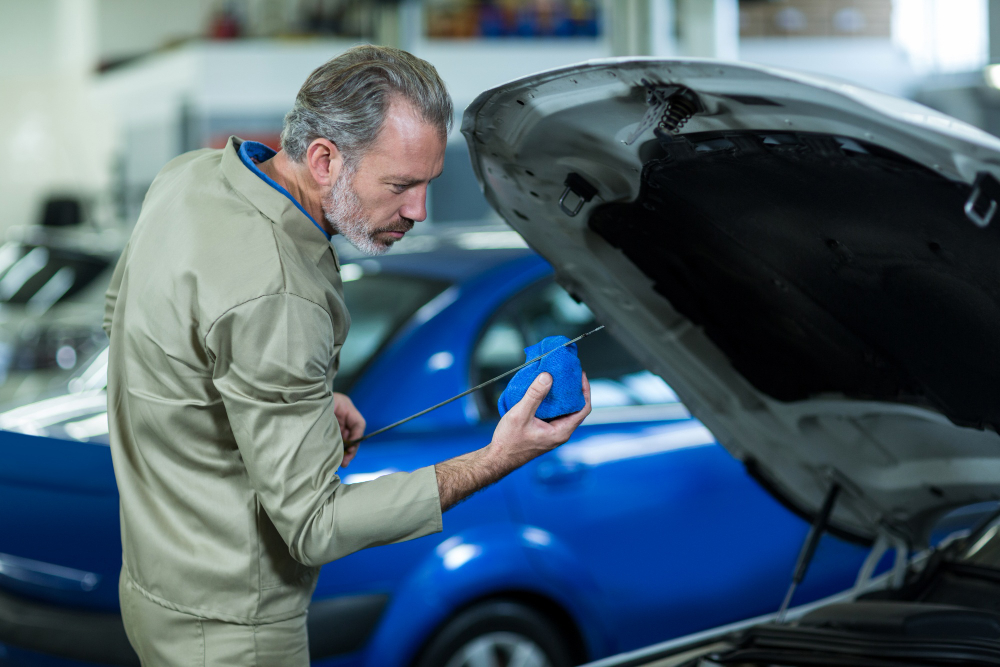Car accidents are stressful, and the damage left behind on your vehicle can be overwhelming. Whether it’s a minor dent or severe body damage, auto body collision repair is crucial to restore your car to its original condition. If you’re new to the process or just want some insider tips, this article will guide you through the essential steps, costs, and factors involved in collision repair.
What Is Auto Body Collision Repair?
Autobody collision repair refers to the process of restoring a vehicle’s exterior and structural components after an accident. It goes beyond just fixing scratches or dents; it involves ensuring the car is safe to drive, mechanically sound, and looks good as new.
Why is collision repair important?
Timely collision repair isn’t just about aesthetics; it ensures your vehicle is structurally sound and safe to drive. Ignoring body damage can cause:
- Corrosion or rust if metal panels are exposed.
- Decreased resale value due to visible damage.
- Compromised safety features, such as crumple zones, may not function in future accidents.
Types of Auto Body Damage from Collisions
Depending on the severity of the accident, different types of damage may occur, such as:
- Dents and dings: From minor fender-benders.
- Scratches and paint damage: scrapes from collisions or road debris.
- Structural damage: frame damage that requires specialized tools for realignment.
- Bumper and fender damage: a common area for repairs, especially in low-speed accidents.
How Auto Body Shops Assess Damage
Autobody shops use advanced tools to evaluate the extent of damage, even if it’s not visible at first glance. Key assessment tools include:
- Visual inspections for surface-level damage.
- Diagnostic scanners to check for internal or electrical issues.
- Frame alignment machines to measure and correct structural misalignment.
Learn More About : Stumps Meaning in Cricket
Steps in the Auto Body Collision Repair Process
1. Vehicle Inspection and Estimate
The repair shop inspects the damage and provides an estimate for repairs, including parts, labor, and time.
2. Insurance Approval (If Applicable)
Once the estimate is ready, insurance approval is often required to proceed with repairs.
3. Disassembly and Further Inspection
During disassembly, hidden damage may become visible, which could result in additional costs or parts being ordered.
4. Structural repairs
If the car’s frame is bent, the shop will use frame straightening equipment to restore it to factory specifications.
5. Dent Repair and Part Replacement
Technicians repair minor dents or replace damaged parts, like bumpers or fenders.
6. Paint and Refinishing
A fresh coat of paint matching the original color ensures your car looks seamless.
7. Final Inspection and Quality Control
The shop will conduct a final inspection to ensure the repairs meet safety standards before returning the car to you.
Get your Cricket Toss Coin now From The Dressing Room.
How Long Does Auto Body Repair Take?
The time required for collision repair varies based on the damage.
- Minor repairs: 1-3 days.
- Moderate damage: 5-7 days.
- Severe damage: 2-4 weeks (or longer if parts are delayed).
Choosing the Right Auto Body Shop
Selecting the right repair shop is essential. Look for:
- Certified technicians (ASE or I-CAR certifications).
- Positive customer reviews online.
- Shops that offer warranties on repairs.
- A detailed, upfront estimate without hidden charges.
Understanding insurance claims for collision repairs
Dealing with insurance can be tricky. Here’s what you need to know:
- Comprehensive and collision coverage typically cover repair costs.
- Deductibles: You must pay this amount before insurance covers the rest.
- Some insurance companies may suggest preferred repair shops, but you can choose your own.
Try the Free Net Run Rate Calculator today
How Much Does Collision Repair Cost?
Collision repair costs depend on the extent of the damage and labor involved.
- Minor dents and scratches: $100-$500
- Bumper replacement: $500-$1,500
- Frame repairs: $1,000- $5,000
The Role of Technology in Modern Auto Repair
Modern collision repair relies heavily on advanced technology, including:
- Laser frame measurement for precision realignment.
- 3D printing to create custom replacement parts.
- Digital color matching for perfect paint finishes.
Common Mistakes to Avoid When Seeking Collision Repair
- Not getting multiple estimates: Prices can vary between shops.
- Ignoring minor damage: Small dents can worsen over time.
- Choosing the cheapest option: Quality matters more than cost.
Also Read : Cricket Rules and Regulations Every Cricket Player Should Know
How to Maintain Your Vehicle After Collision Repair
- Regularly wash and wax the repaired areas to protect the paint.
- Monitor for strange noises or changes in handling, which may indicate hidden issues.
- Schedule a follow-up inspection if you notice any problems after the repair.
Conclusion
Autobody collision repair is essential for restoring your vehicle’s safety and appearance after an accident. From selecting the right body shop to understanding the costs and insurance process, being informed helps you navigate repairs with confidence. Whether you need minor dent removal or major structural repairs, knowing what to expect ensures a smooth repair process.
Read More: https://alifamilygroup.com/kinds-of-kindness-showtimes-ali-family-group/
